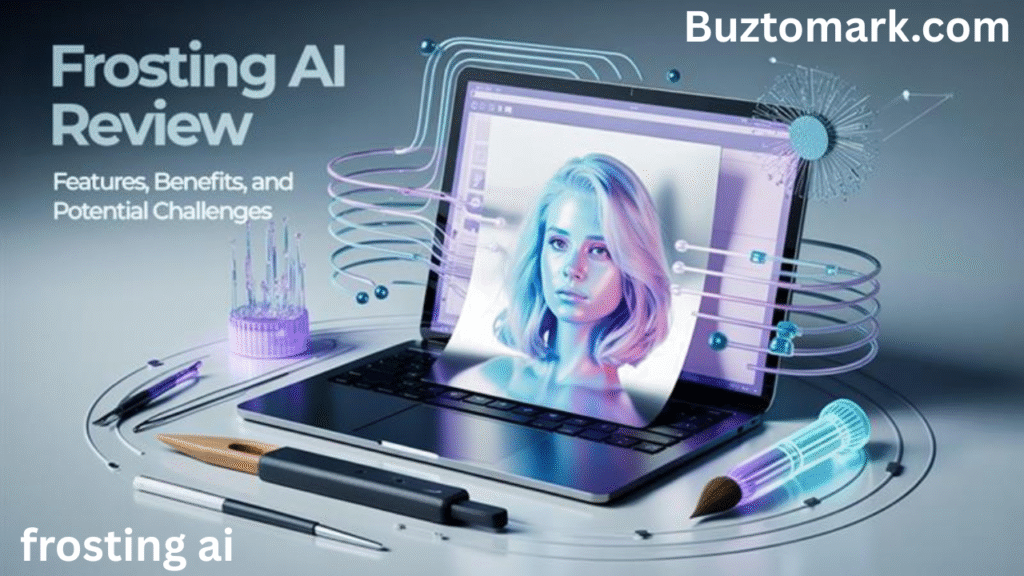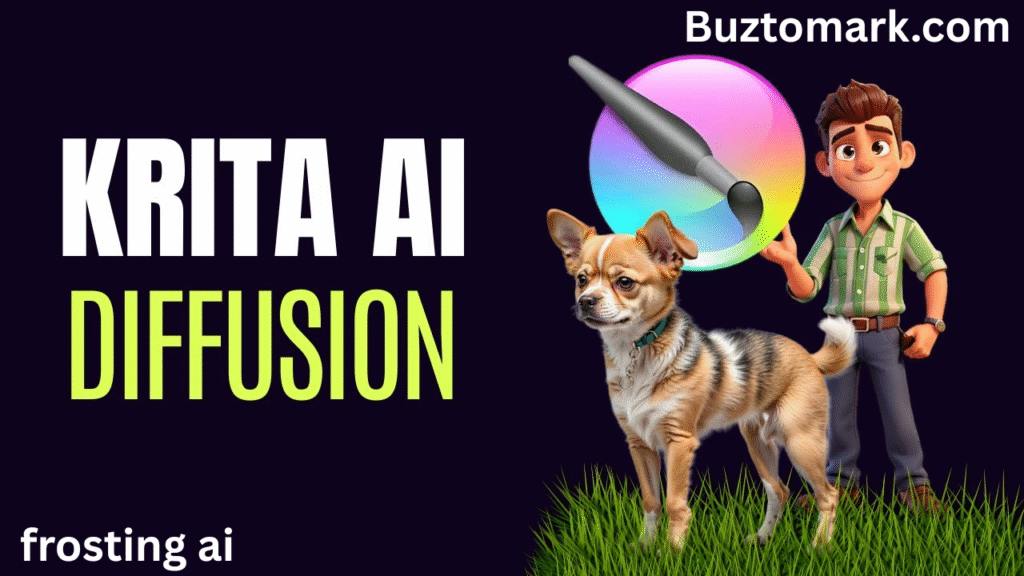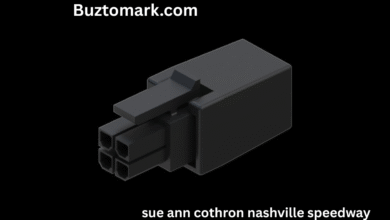Exploring Frosting AI: What is Frosting AI, ??, and the Future of Sweet TechShort Title: Frosting AI, ??, and the Rise of Sweet Tech Innovations

In the fast-paced world of artificial intelligence, a new term has surfaced in niche conversations: “frosting ai“. At first glance, the phrase might seem like a quirky blend of culinary delight and digital intelligence—but there’s more under the surface. Whether “frosting ai??” is a metaphorical layer of enhancement in AI applications, a misunderstood phrase, or an emerging concept, this article delves into all aspects of what “frosting ai” could mean in today’s tech-driven era.
While the phrase might not have widespread recognition in mainstream AI literature yet, the implications behind its creative combination open discussions on enhancing AI capabilities with user-friendly, visually engaging, or soft-layered features—like frosting on a cake. Let’s explore what frosting ai means, why it’s relevant, and what it could represent in the evolution of artificial intelligence.
What Does “Frosting AI” Really Mean?

The term frosting ai does not yet have an officially recognized definition in academic or technical AI literature. However, the conceptual interpretation of the term offers intriguing possibilities. If we break it down:
- “Frosting” usually refers to a sweet decorative topping applied to cakes or desserts. Metaphorically, it can represent beautification, enhancement, or finishing touches.
- “AI” (Artificial Intelligence) refers to machines and software systems that mimic human cognitive functions, like learning, problem-solving, and decision-making.
Put together, frosting ai may symbolize the layer of polish, usability, or emotional intelligence added to core AI functions. It can also imply making AI more “human-friendly” or aesthetically pleasing in terms of user experience.
In a broader sense, frosting ai may also denote auxiliary features built on top of core AI models to improve their functionality, interaction, or purpose. Just like frosting enhances the appeal of a cake, frosting ai can enhance the appeal and accessibility of AI systems.
Frosting AI in UX/UI: The Human Layer

If we treat “frosting ai” as a conceptual layer added to existing AI systems, one of the clearest applications is in user experience and user interface (UX/UI) design. Many AI applications operate in the background—processing data, making predictions, or generating content. However, for non-technical users, interacting with raw AI outputs can be intimidating or unappealing.
That’s where the idea of frosting ai enters. Think of AI tools like chatbots, content generators, or recommendation engines. When developers add intuitive interfaces, animations, voice feedback, or sentiment-aware responses, they are essentially frosting the AI to make it more palatable for the end user.
For instance, generative chat tools like ChatGPT could be seen as having a “frosted” interface compared to barebones APIs. That additional layer—be it in the design, tone, or interaction—bridges the gap between high-tech computation and daily human use.
Frosting AI?? – A Confusing Phrase or a Gateway to More?
The inclusion of “??” next to frosting ai adds a layer of curiosity or uncertainty. It might reflect confusion, surprise, or a question about the concept’s legitimacy or clarity. “Frosting ai??” can be interpreted as a prompt or reaction, such as:
- Is “frosting ai” real?
- What does “frosting ai” mean?
- Why is this term gaining traction?
The question marks serve to amplify the ambiguity or novelty of the term, urging tech enthusiasts and AI researchers to investigate further.
Whether “frosting ai??” is a whimsical meme or a placeholder for something deeper, it highlights the constant state of flux in the AI world. It’s a reminder that not every phrase must start with a solid definition to spark meaningful conversation and innovation.
Creative Layers in AI: Is “Frosting AI” the Next Step?

The advancement of artificial intelligence has so far focused on depth—better algorithms, deeper neural networks, and more accurate predictions. But the next frontier may well be about “breadth” and approachability, where frosting ai plays a symbolic role.
For example:
- AI in Art: Tools that use generative models to create images or music often include stylistic “frosting”—filters, visual enhancements, or textures that give the output personality.
- Conversational AI: Chatbots now include emotionally intelligent responses, humor, and tailored tone—adding an extra “frosting” of relatability.
- Healthcare AI: Beyond diagnostics, some healthcare AI systems are being designed to communicate with patients empathetically, reducing the cold, clinical tone of early iterations.
Each of these use cases showcases frosting ai as an enhancer, making the core AI functions more engaging, intuitive, and human-centric.
The Psychological Impact: Sweetening AI for Better Adoption
Another interesting lens through which to examine frosting ai is its psychological effect on users. Humans are naturally drawn to things that are visually pleasing, emotionally resonant, and intuitively designed. When AI is delivered with these qualities, users are more likely to trust, adopt, and enjoy the technology.
This can be particularly useful in industries like education, mental health, and customer service, where engagement and comfort are critical. AI interfaces with soft color schemes, human-like responses, or even gamification features can be seen as practical examples of frosting ai in action.
In short, frosting ai doesn’t just mean making AI prettier—it can mean making it more effective by designing it around human needs and behaviors.
Potential Challenges of Frosting AI
While the concept of frosting ai has its charm and utility, it’s not without potential downsides:
- Superficial Add-ons: There’s a risk of focusing too much on aesthetic features without improving core AI functionality.
- Deceptive Interfaces: Over-frosted AI systems could give a false sense of capability or safety, especially in sensitive areas like legal tech or autonomous vehicles.
- Resource Allocation: Time and budget spent on “frosting” might sometimes detract from solving deeper technical issues.
Balancing the frosting with the foundation is key. A well-frosted cake is only delightful if the cake itself is solid.
Frosting AI as a Trend, Meme, or Metaphor?
In online circles, especially in tech subreddits and Twitter threads, odd or meme-like phrases like frosting ai?? often emerge. Whether meant seriously or humorously, they tend to reflect real undercurrents in technology conversations.
“Frosting ai” could eventually become:
- A metaphor for aesthetic improvements in AI.
- A trend in design-focused AI tools.
- A buzzword in marketing campaigns.
- A placeholder for human-first innovation in machine intelligence.
As the landscape evolves, the phrase may settle into a recognized niche—or it might remain a quirky footnote in the culture of modern AI discourse.
Conclusion: Frosting AI and the Human Touch
Frosting ai, whether a technical framework, a design philosophy, or simply a fun metaphor, reflects an important shift in how we think about artificial intelligence. It represents the humanization of a previously cold and mechanical field, urging creators to build AI that not only works but also feels right to use.
The addition of “??” symbolizes our ongoing curiosity, confusion, and engagement with emerging tech ideas. As we move forward, expect to hear more discussions—not just about how smart AI can be, but about how sweet it can feel to use. And maybe, just maybe, “frosting ai” will become the catch-all term for that extra layer of care we’re starting to demand from our digital tools.
FAQs about Frosting AI
1. Is “frosting ai” a real technology or just a concept?
Currently, “frosting ai” is more of a conceptual or metaphorical term. It doesn’t refer to a specific software or product but can describe a layer of enhancement in AI design.
2. Why do people add “??” to “frosting ai”?
The question marks usually express confusion, curiosity, or disbelief—possibly reacting to how unusual or undefined the phrase sounds.
3. Can “frosting ai” be applied in real-world AI tools?
Yes. Enhancements like better UX, emotional intelligence in chatbots, or creative visual interfaces can be seen as examples of frosting ai.
4. Is frosting ai important for user adoption?
Absolutely. User-friendly AI tools are more likely to be adopted and trusted. A well-designed interface or emotionally aware output increases user satisfaction.
5. Could “frosting ai” become a future trend?
It’s possible. As AI tools become more integrated into daily life, developers may increasingly focus on making them not just functional but also enjoyable—aka, frosting them.
Read More: My Katy Cloud Login?? – Full Guide, Common Issues & Login Tips




